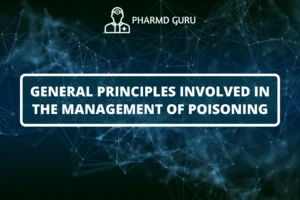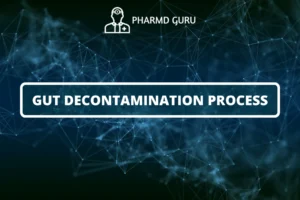Radiation poisoning, also known as radiation sickness or acute radiation syndrome, occurs when the body is exposed to high levels of ionizing radiation.
SCROLL DOWN TO THE BOTTOM OF THE PAGE FOR ACTUAL NOTES
TABLE OF CONTENTS:
- Introduction
- Radiation Poisoning
- Clinical Symptoms of Acute Radiation Poisoning
- Management of Acute Poisoning
- 4.1. Immediate Actions
- 4.2. Medical Interventions
- 4.3. Supportive Care
- Prevention Tips
1. Introduction
Radiation poisoning, also known as radiation sickness or acute radiation syndrome, occurs when the body is exposed to high levels of ionizing radiation. It can result from accidental nuclear incidents, radiation therapy, or occupational exposure. Acute radiation poisoning requires prompt medical attention and proper management to mitigate its effects. This article explores the clinical symptoms associated with acute radiation poisoning and provides insights into the recommended management strategies.
2. Radiation Poisoning
Radiation poisoning occurs when ionizing radiation, such as gamma rays or X-rays, interacts with the body’s cells, causing damage to DNA and disrupting cellular functions. The severity of radiation poisoning depends on factors such as the radiation dose, duration of exposure, and type of radiation.
3. Clinical Symptoms of Acute Radiation Poisoning
Acute radiation poisoning can manifest with the following clinical symptoms, which may vary depending on the radiation dose and affected body areas:
- Nausea and Vomiting: Individuals may experience nausea, vomiting, and loss of appetite within hours to days after radiation exposure.
- Fatigue and Weakness: Radiation poisoning can cause extreme fatigue, weakness, and a general feeling of being unwell.
- Skin Effects: Skin may become red, irritated, or develop a sunburn-like rash in the exposed area.
- Gastrointestinal Effects: Radiation damage to the gastrointestinal tract can result in diarrhea, abdominal cramping, and dehydration.
- Hair Loss: In cases of significant radiation exposure, hair loss may occur.
- Bone Marrow Suppression: Radiation can affect the bone marrow, leading to a decreased production of blood cells, which can result in anemia, bleeding, and increased susceptibility to infections.
- Central Nervous System Effects: High doses of radiation can cause neurological symptoms, including confusion, dizziness, headache, and seizures.
The severity of symptoms depends on the radiation dose and can range from mild to life-threatening in cases of high-dose exposure.
4. Management of Acute Poisoning
4.1. Immediate Actions
In cases of acute radiation poisoning, it is essential to take the following immediate actions:
- Evacuate and Distance: If possible, move away from the radiation source and into an area with lower radiation levels.
- Remove Contaminated Clothing: If clothing is contaminated with radiation, remove it carefully to minimize further exposure.
- Seek Medical Attention: Contact local emergency services or a radiation expert for guidance and medical assistance.
4.2. Medical Interventions
Medical professionals may employ the following interventions for managing acute radiation poisoning:
- Decontamination: If there is external contamination, decontamination measures such as washing the skin or removing radioactive particles may be performed.
- Radiation Measurements: Measurements of radiation levels in the body, such as whole-body or partial-body counting, can help assess the extent of radiation exposure.
- Supportive Care: Medical interventions, such as blood transfusions, antibiotics to prevent or treat infections, and medications to manage symptoms like nausea and pain, may be provided as supportive care.
- Stem Cell Transplantation: In severe cases of radiation poisoning, where bone marrow suppression is severe, stem cell transplantation may be considered to replenish healthy bone marrow cells.
4.3. Supportive Care
Supportive care plays a crucial role in managing acute radiation poisoning and may involve:
- Fluid and Electrolyte Replacement: Intravenous fluids and electrolytes are administered to maintain hydration and restore electrolyte balance.
- Infection Prevention: Strict infection control measures are implemented to reduce the risk of infections, including isolation precautions and prophylactic antibiotic use.
- Symptom Management: Medications may be prescribed to manage symptoms such as nausea, vomiting, pain, and diarrhea.
5. Prevention Tips
Preventing acute radiation poisoning involves adhering to safety guidelines and following radiation safety protocols. Consider the following prevention tips:
- Radiation Safety Training: Receive proper training and education on radiation safety if working in occupations involving radiation exposure.
- Personal Protective Equipment: Use appropriate personal protective equipment, such as lead aprons, gloves, and shielding, when working with or near radiation sources.
- Adherence to Safety Procedures: Follow established safety procedures and protocols for handling and using radiation equipment.
- Radiation Monitoring: Regularly monitor radiation levels in the workplace and take appropriate measures to minimize exposure.
- Emergency Preparedness: Be familiar with emergency procedures and evacuation plans in case of a radiation incident.
ACTUAL NOTES




